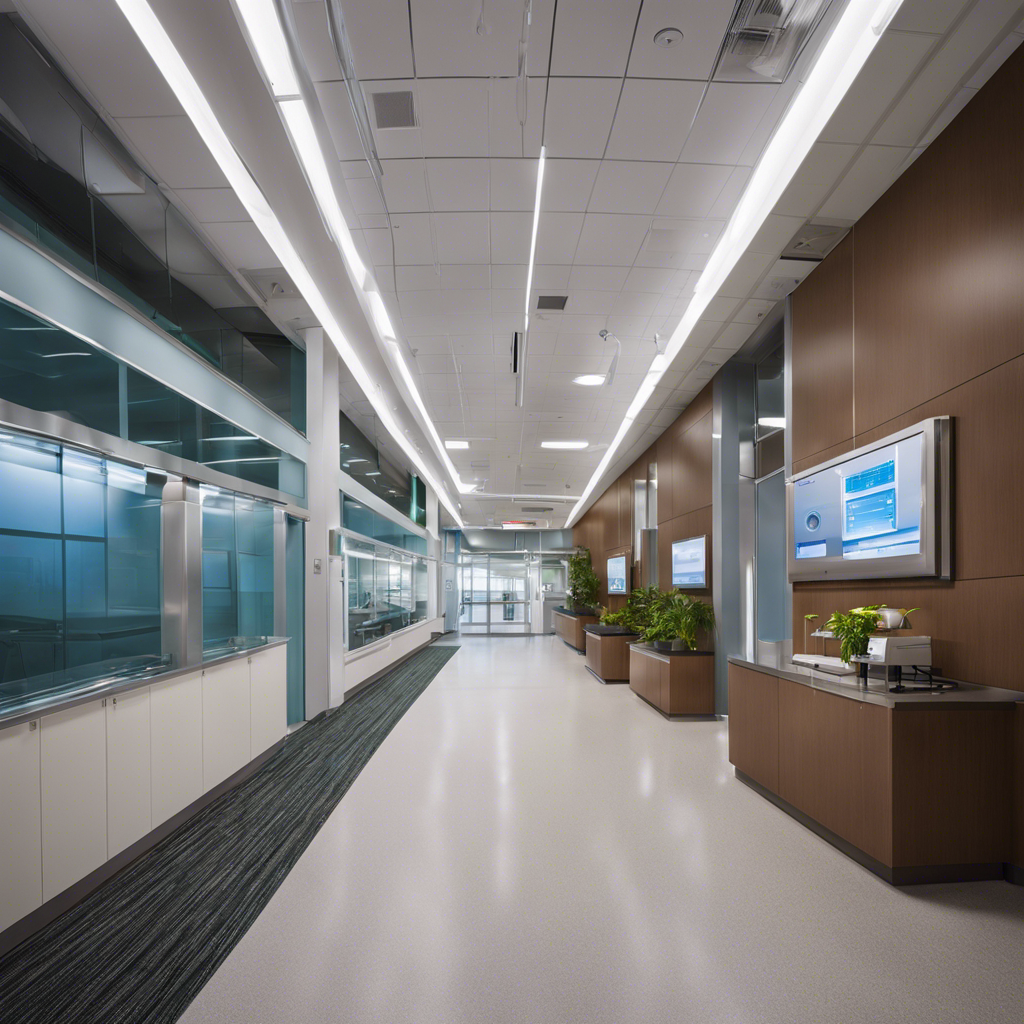Are you aware of just how crucial HVAC systems are for maintaining optimal indoor air quality in Tulsa medical facilities? The role they play goes far beyond simply keeping the temperature comfortable.
In fact, the health and well-being of both patients and staff depend on the proper functioning of these systems. From controlling temperature and humidity levels to effectively removing contaminants and ensuring proper ventilation, HVAC systems are essential in creating a safe and healthy environment.
But that’s not all, there’s more to discover about the critical role HVAC plays in medical facilities, so let’s explore further.
Key Takeaways
- HVAC systems play a crucial role in maintaining optimal indoor air quality in medical facilities in Tulsa.
- Temperature and humidity control are essential for preventing the growth of harmful microorganisms and ensuring the comfort of patients and staff.
- Effective removal and filtration of contaminants, including the use of high-efficiency filters and advanced technologies, are necessary for clean air.
- Proper ventilation and air circulation not only prevent the spread of infectious diseases but also create a safe environment by continuously providing fresh, filtered air and eliminating pathogens.
Importance of HVAC in Medical Facilities
The HVAC system plays a crucial role in maintaining optimal indoor air quality in medical facilities. It’s essential for medical facilities to have a reliable and efficient HVAC system to ensure the well-being of patients and staff.
One important aspect of the HVAC system in medical facilities is energy efficiency. By using energy-efficient equipment, medical facilities can reduce their energy consumption and lower their carbon footprint. This not only helps the environment but also saves money on energy costs.
Another important factor is equipment maintenance. Regular maintenance of the HVAC system ensures its proper functioning and extends its lifespan. This includes cleaning filters, inspecting ductwork, and checking for any potential issues.
Temperature and Humidity Control
To ensure optimal indoor air quality, it’s crucial to control temperature and humidity levels in medical facilities.
Temperature and humidity control not only affects the comfort of patients and staff, but it also plays a vital role in preventing the growth of bacteria, viruses, and other harmful microorganisms.
Maintaining the appropriate temperature and humidity levels can also help to reduce the risk of mold growth and the spread of airborne contaminants.
In addition to improving indoor air quality, proper temperature and humidity control also contributes to energy efficiency and equipment maintenance.
Contaminant Removal and Filtration
For optimal indoor air quality in medical facilities, it’s essential to effectively remove and filter contaminants. Airborne pollutants can pose a significant risk to the health and well-being of patients, staff, and visitors.
To ensure clean air, advanced HVAC systems are equipped with high-efficiency filters that can capture and remove a wide range of contaminants, including dust, pollen, bacteria, and viruses. These filters are designed to trap even the smallest particles, ensuring that the air circulating within the facility is free from harmful pollutants.
Additionally, some HVAC systems incorporate technologies such as UV germicidal irradiation to kill bacteria and viruses, further enhancing the air quality.
Regular maintenance and filter replacement are crucial to ensuring the continued effectiveness of the filtration system, providing a safe and healthy environment for all.
Proper Ventilation for Air Circulation
Proper ventilation is crucial for ensuring efficient air circulation within medical facilities. It plays a vital role in maintaining indoor air quality and preventing the spread of airborne contaminants.
To achieve this, medical facilities utilize air purifiers and promote regular air exchange. Air purifiers are effective in removing allergens, bacteria, and viruses from the air, helping to create a healthier environment for patients and staff.
Additionally, regular air exchange is necessary to remove stale air and replace it with fresh outdoor air. This process aids in diluting indoor pollutants and maintaining a steady flow of clean air throughout the facility.
Preventing the Spread of Infectious Diseases
Maintaining proper ventilation and air circulation within medical facilities is essential for preventing the spread of infectious diseases. Effective infection control measures and cross contamination prevention are crucial in safeguarding the health of patients, staff, and visitors.
HVAC systems play a critical role in achieving these goals by continuously providing fresh, filtered air and removing airborne contaminants. To prevent the transmission of infectious diseases, medical facilities should ensure that their HVAC systems are equipped with high-efficiency air filters that can capture and eliminate bacteria, viruses, and other harmful particles.
Additionally, regular maintenance and cleaning of HVAC systems are necessary to prevent the buildup of pathogens and maintain optimal indoor air quality. By implementing robust infection control strategies and utilizing advanced HVAC technology, medical facilities can create a safe and healthy environment for all.
Frequently Asked Questions
How Often Should HVAC Systems in Medical Facilities Be Inspected and Maintained?
You should inspect and maintain HVAC systems in medical facilities regularly, like a doctor checking a patient’s vital signs. The inspection frequency and maintenance schedule will depend on factors like the size of the facility and the specific HVAC system in place.
What Are Some Common Contaminants That HVAC Systems in Medical Facilities Can Remove?
Your HVAC system in medical facilities can effectively remove indoor air pollutants such as dust, pollen, mold spores, and bacteria. With proper HVAC filtration, these contaminants can be minimized, creating a healthier environment for patients and staff.
Are There Any Specific Guidelines or Regulations Regarding Ventilation Rates in Medical Facilities?
Are you curious about the guidelines and regulations on ventilation rates in medical facilities? Well, let me tell you, these guidelines ensure optimal air quality, keeping patients and staff healthy and comfortable.
How Does HVAC Contribute to the Prevention of Airborne Transmission of Infectious Diseases?
HVAC plays a crucial role in preventing the spread of infectious diseases through airborne transmission. By utilizing advanced filtration systems and air purification methods, HVAC systems effectively remove pathogens and ensure the safety of indoor air quality.
What Are Some Additional Measures That Can Be Taken Alongside HVAC Systems to Improve Indoor Air Quality in Medical Facilities?
To improve indoor air quality in medical facilities, you can implement additional measures alongside HVAC systems. Consider using air purifiers and filtration systems. These tools will help remove contaminants and ensure a safer environment for patients and staff.


